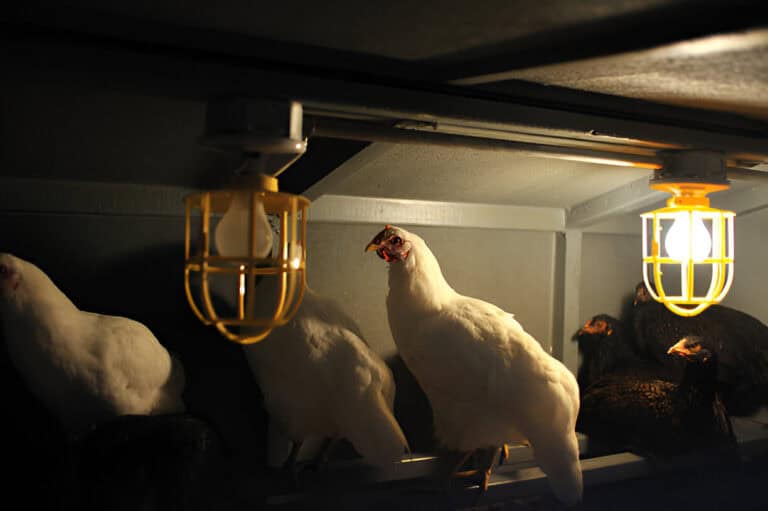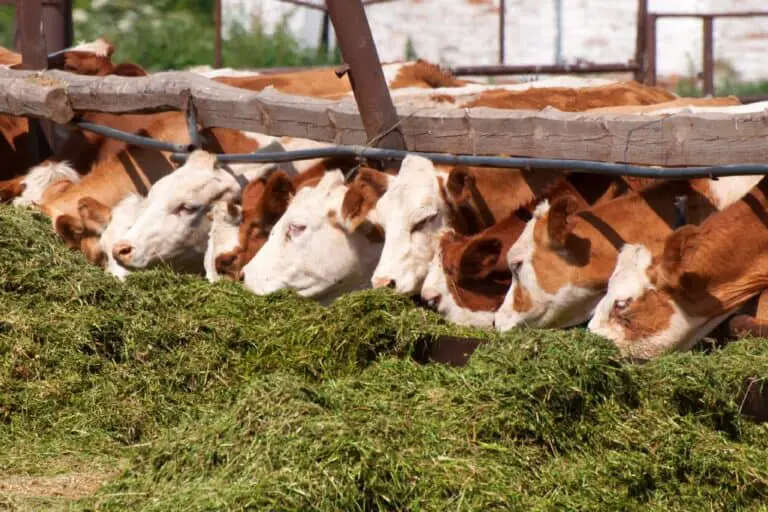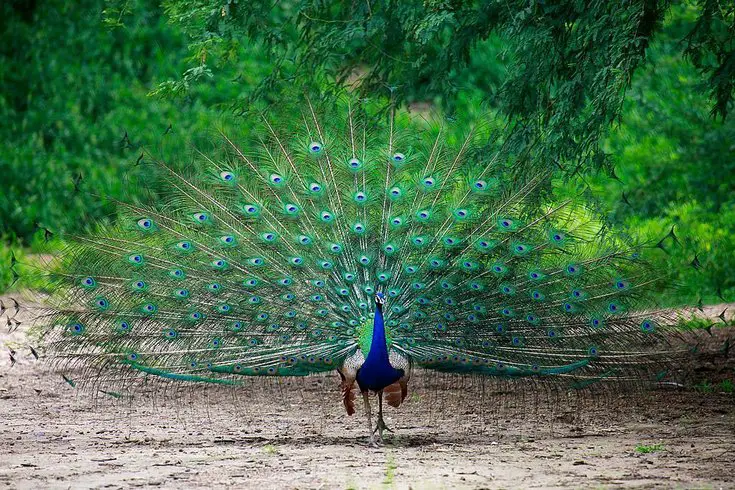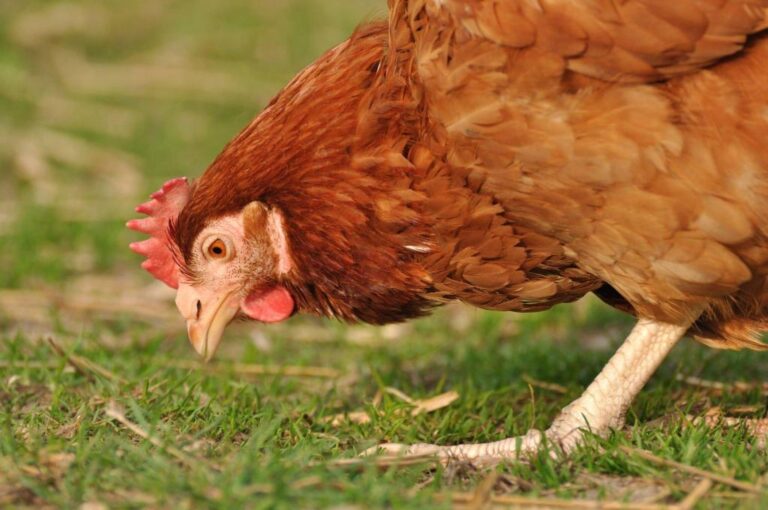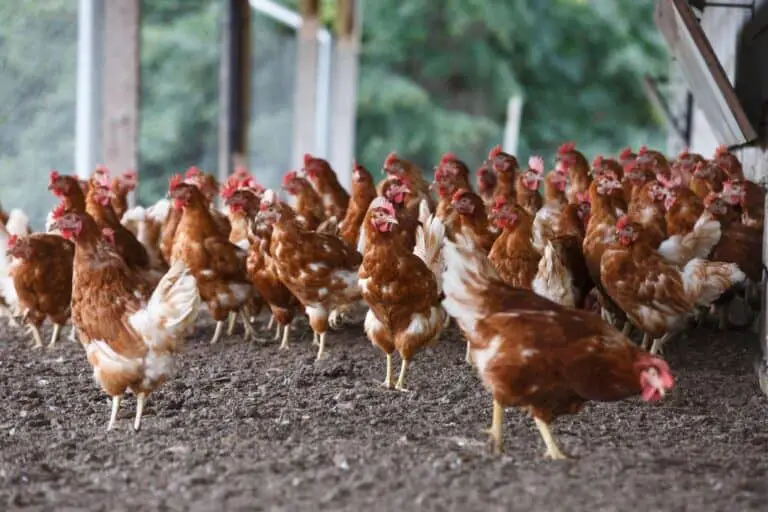Dehorning Goat’s Horns: How to Remove Them Safely
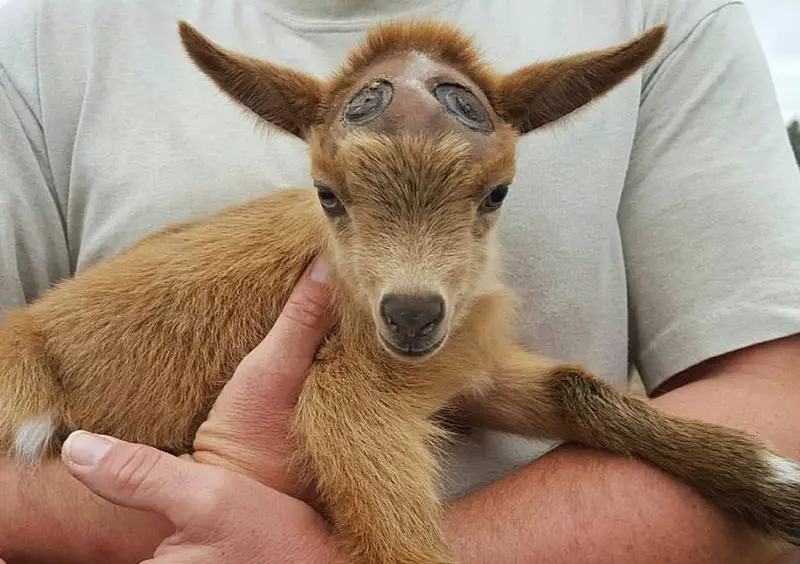
All goat breeds have horns, but there may come a time when you need to remove them. There are several reasons why you might choose to dehorn your goat horns, such as safety concerns for you or your animals, preventing injuries, or reducing the risk of getting tangled in fences.
Dehorning goat’s horns is a common practice in farming or husbandry. It is a safe and relatively easy procedure when done properly by a veterinarian or by you.
Removing horns is considered a surgical procedure that should be performed by a veterinarian, but you, as a farmer or breeder, can also do it.
In this article, we will discuss the methods and procedures for dehorning goats. There are some things you can do to prepare your goats for this procedure and help them recover safely.
What Do Goats Use Their Horns For?
The controversy over whether dehorning is cruel or not came from the fact that goat horns aren’t just for looks.
During warmer weather, the goat horns serve primarily as an air-cooling device. The horns assist in temperature regulation, which is why experts advise against dehorning species like the Angora goat. This goat’s breed has mohair fleece and will quickly overheat the animal in warmer weather.
The horns also act as a means of communication and protection. The goat’s head bobbles when it’s agitated. They are also a means of defense. The horns can be used to stun predators such as dogs, and they can even be used to attack them (as in the case of the Angora goat).
Why Dehorning Goat’s Horns?
Since horns can be problematic, most goat breeders and keepers prefer hornless goats. An irritable goat may wreak havoc on property, hurt other goats, and endanger human workers.
Goats defend themselves against predators by using their horns. They are also used to compete for social status within the herd. These purposes, however, are no longer required when the herd is kept and bred indoors, like on a farm.
When horned goats fight, they can get hurt, which reduces their output and health. In addition, their horns can become caught in fences or gates, causing injury or death as well as property damage.
Because of these factors, the majority of dairy goat breeders dehorn their babies at a young age. If you’ve ever tried milking a grumpy goat, you know how difficult it can be.
Goat farmers who want to use their goats for meat or fiber are less likely to do this. However, if you do, you should adhere to the same criteria outlined below.
How Are a Goat’s Horns Removed?
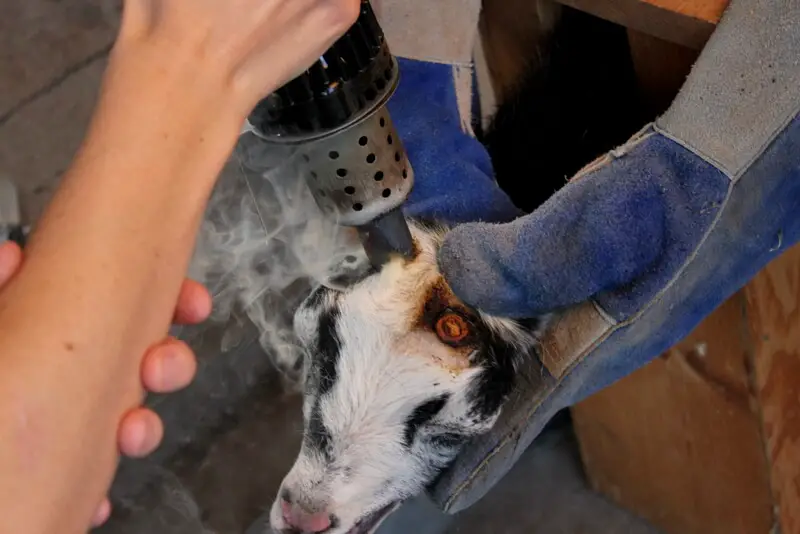
It is entirely up to you as the farmer or breeder whether to dehorn your goats; nonetheless, this is a common procedure among goat farmers.
A goat’s horn is composed of keratin, which is the same material that is found in human hair. While environmental factors like nutrition and hormones have an impact on horn growth, animals pass it down through generations.
There are numerous common methods for removing or preventing a goat’s horns from developing.
Disbudding and dehorning are not the same thing. Disbudding is performed when the goats are still a few days old while dehorning is done after the goats grow up. Disbudding is believed to be more humane and less painful than dehorning.
Disbudding Goats Horns
Disbudding is the process of eliminating an animal’s horn buds. It is done while the animal is still young. Farmers decide to disbud goat youngsters depending on their herd management practices, market demands, and farm infrastructure.
When a goat is disbudded, the horns of the kid or young goat are removed. They are destroyed by the heat of a hot iron before they can develop. It’s quick, easy, and less painful for the goats as well.
It is common to employ disbudding to remove horns from goats when they are just a few days old. A goat without horns should be disbudded as soon as possible, within the first four or ten days of life.
It only takes a few seconds to complete the procedure, so less pain for the goats. The treatment is often performed on a few-day-old goats, depending on when the horn bud penetrates the skull. To prevent the horns from growing, it is necessary to cauterize the region around a buck’s horn bud so that blood cannot flow to the horns.
Dehorning Goats Horns
Dehorning a goat refers to the process of removing the goat’s horns once they have grown in. This is done on older goats that still have their horns. They were not disbudded when they were children.
Dehorning a goat is significantly riskier because it is done when disbudding is no longer possible—that is, after the horn buds emerge. There are a variety of methods, all of which include removing the horns that are already there. This procedure is frequently distressing for both the animal and its owner.
It’s better to have a veterinarian conduct this to sedate the goat, making it less traumatic and unpleasant, reducing blood loss, and ensuring the procedure is done correctly.
| Related: Do Goat Horns Grow Back if Broken or After Disbudding? |
How to Dehorn Goats Horns Safely & What Tools Used?
To keep goats healthy, it is important to know how to dehorn them safely. Several methods can be used, but the most common is to use a sharp knife to cut off the horn buds when they are young. If done correctly, this will prevent the goat from growing horns.
Bellow, we will discuss various techniques and tools used to dehorn goats safely.
Knife Dehorning
Knife dehorning is the process of removing the horns from a goat using a sharp knife. You will need a knife or sharp blade to cut away the skin surrounding and beneath the horn bud. It is considered a surgical procedure for separating the horn from the base tissue. It works well on little horns. But the downside is that it’s considered cruel and unpleasant. It is also dangerous for both the animal and its handler.
Tube, Cup, or Spoon Dehorning
Each method of tube, cup, or spoon dehorning has its benefits and drawbacks. Tube dehorning is the most common method. It is relatively easy to do and causes minimal pain to the goat. However, it can be difficult to remove all the horn tissue.
To perform tube dehorning, a veterinarian inserts a hollow tube about 4 inches long into the horn bud. The tube is inserted so that the tip sits close to the end of the horn.
The veterinarian then removes the horn bud using a hand tool, such as a claw or knife. The horn bud is removed with minimal damage to the goat’s skin. A goat can be dehorned with or without anesthetizing the animal.
Cup dehorning is a more invasive method, but it is less likely to cause infection than the tube method. Spoon dehorning is a less invasive option, but it is more likely to cause infection and, if done incorrectly, can lead to problems.
Most states have laws about how to dehorn goats. For instance, in the state of Ohio, goats can have their horns removed using a spoon or tube. Only a veterinarian with specialized training in dehorning goats is qualified to dehorn goats in the state of Texas. So you better adhere to the allowed dehorning goat methods based on your area.
Barnes or “Gouger” Dehorning
Barnes or “Gouger” dehorning is a method of dehorning goats with a closed set of sharp scoops which is placed over the horn against the base and surrounding skin. Often, it used a sharp knife to cut around the horn base, severing the blood vessels and nerves. The horn is then pulled from the animal’s head.
Barnes dehorning method needs more tools commensurate to the size of the horn. It is also considered painful and poses risk to the goat and handler.
Keystone or “Guillotine” Dehorning
In keystoneing, two handles use a sharp knife downward on a plate for another sharp blade. It is used to cut off the horn at the base, just above the skull. In guillotining, the horn is cut off just below the head with a special guillotine-like instrument. Both methods are effective for older grown horns.
Hand Saw Dehorning
To use this Hand Saw Dehorning method, you will need a sharp saw, gloves, and a rag. First, you will want to make sure the goat is restrained. You can do this by tying them to a post or having an assistant hold them.
Once the goat is restrained, put on your gloves and take the saw in your dominant hand.
Position the saw above the horn and cut it straight down. Make sure to cut through the horn.
When Should You Dehorn A Goat?
The decision depends on the breed of the goat, the age and size of the goat, and the intended use of the goat. Dehorning can be done as early as a few days old (or known as disbudding), or as late as six months old. It can be done with a sharp knife, or with a hot iron. It can be done on both sides, or just one side.
The most important factors in deciding when to dehorn a goat are that the goat has been dehorned at an early age and will not be used for breeding. If a goat has never been disbudding at an early age, it will be much harder to take the horn off later.
You should try to disbud them when they are between 4 and 10 days old. This way, you won’t have to remove the buds when they are too old.
Dehorning Goats: How Late Is Too Late?
As we mentioned above, the best time to dehorn (in this case, disbudding) goats is between 4 and 10 days old (or between 1 and 2 weeks).
Dehorning goat’s horns, at 1 month of age, are more likely to develop scars. After 1 inch, it’s probably too late to disbud the animal.
Although it is possible to dehorn an older goat without removing the top of the head, this procedure requires extensive healing time (roughly about 6–8 weeks).
Can You Dehorn A Full Grown Goat?
The answer is yes. To dehorn full-grown goats, you can attempt banding their horns, which entails wrapping wire and a band around the goat’s horns before they fall off.
Using this technique, the location of the bands is critical. Put the band around the goat’s horn base as low as possible after shaving the horn base. Bands that are not low enough can roll-off or the horns can grow.
Dehorning an adult goat may be a bloody task and demand surgery with numerous dangerous problems; thus, disbudding babies is more preferred. Horns and scurs can form as a result of delayed or ineffective disbudding for a variety of reasons.
It is recommended that veterinarians employ sedation and/or local nerve blocks to remove adult goats’ horns to prevent excessive bleeding and keep an eye out for infection. Antibiotics may be necessary if tetanus prophylaxis (vaccine or anti-toxin) is not available.
Conclusion
In conclusion, dehorning goats is a common practice that helps keep both the animals and people safe. There are a few different ways to remove the horns. The most effective and humane method is by disbudding the goat’s horns when they are still a few days old. It is important to remember to keep the goats calm and comfortable before, during, and after the procedure.
Mastering the art of safe and humane goat horn removal involves a careful consideration of various factors. Understanding the diverse goat dehorning methods is crucial, ensuring that the chosen technique aligns with safe practices and minimizes stress for the animals.
Emphasizing humane dehorning techniques not only prioritizes the well-being of the goats but also contributes to a harmonious relationship between caretakers and their herds. Discovering the best age to dehorn goats is a pivotal aspect, as early intervention ensures a less stressful experience.
Implementing a well-informed dehorning procedure for goats requires a thoughtful approach, considering the unique needs of each animal. By incorporating these keywords—goat dehorning methods, safe goat horn removal, humane dehorning techniques, best age to dehorn goats, and dehorning procedure for goats—into your practice, you contribute to the overall welfare of your herd.
Ultimately, adopting responsible dehorning practices not only promotes safety within the herd but also establishes a compassionate and sustainable approach to goat care.
FAQs
What is the best age to dehorn goats?
The optimal age to dehorn goats is within the first few weeks of life. Dehorning at a young age reduces stress, minimizes pain, and promotes faster healing. Waiting too long can make the process more challenging and discomforting for the goat.
Are there humane methods for dehorning goats?
Yes, several humane methods exist, such as disbudding using a hot iron or applying caustic paste. These methods are designed to minimize pain and stress for the goat while effectively preventing horn growth.
Can I dehorn goats without causing them pain?
While some discomfort is inevitable, using proper techniques and pain management, such as local anesthesia, can significantly reduce the pain associated with dehorning. Consult with a veterinarian for the most humane approach.
Are there legal regulations for dehorning goats?
Regulations regarding dehorning vary by location. In many places, it is legal to dehorn goats, but specific methods and age restrictions may apply. Always check local animal welfare laws and consult with a veterinarian to ensure compliance.
What are the risks of not dehorning goats?
Not dehorning goats can lead to potential injuries, both to the goats themselves and other herd members. Horned goats are more prone to causing harm during play or fights. Dehorning helps prevent these risks and contributes to a safer environment for both the goats and their caretakers.

